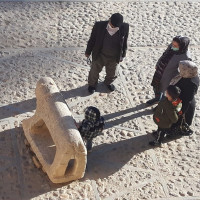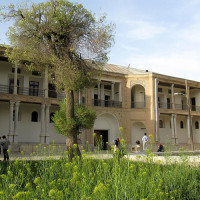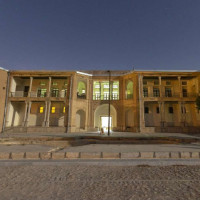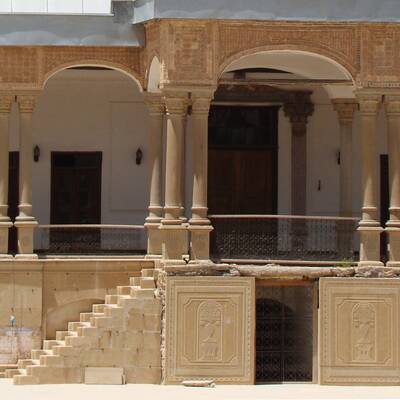
Stone Museum of Dezak
Stone Museum of Dezak is located 35km to Shahr-e Kord that was established in 1394 inside the Cultural and Historical Complex of Amir Mofakham. Lotfali Khan Amir Mofakham was one of the political men in Qajar period who was the minister of war for a while. Dezak Castle that is currently called Cultural and Historical Complex of Amir Mofakham was the private property of him that becomes a center for establishing military organization during World War II when there was no unified power to defense Iran. many political men and elites come here for years.
The historical stone materials related to Safavid to Qajar periods are kept in the Stone Museum of Dezak. They are capitals, columns, stone lions, tombstones, grindstone, stone plinths and many more the most famous and attractive of which are stone lions. The stone lion that is called Bardshir in the local language is in fact rooted in an old tradition based upon the celebration of brave and warrior persons in which those who have lion over their graves were either older than forty or were one of the highlighted political or social characters. The tradition is still alive among some people of the province. The stones needed for making lion sculptures were supplied from the surrounding mountains in the past and all processes of creating were carried out on the grave of the deceased.
The myths related to the lion are different in different regions and people know it in various ways; however, the lion is totally the symbol of Mitra, sun, heat, summer, victory, bravery, power, light, fire and monarchy in Iran. It was the embodiment of Mehr goddess among Aryan people and since the Mehr was itself the sign of ancient Aryan civilization, people around the world considered lion to be the indicator of Aryan in that period of time that become later the symbol of Iranian kings. The antiquity of stone lions, their roots, and the tradition of installing a lion over the grave back to Kassites who lived in Lorestan between 1200-1500 BC. The stone lions are scattered around the Iran Plateau so that they can be found in northwest, south, southwest, west and even the center of Iran Plateau.



.jpg)
